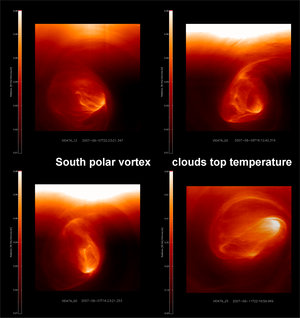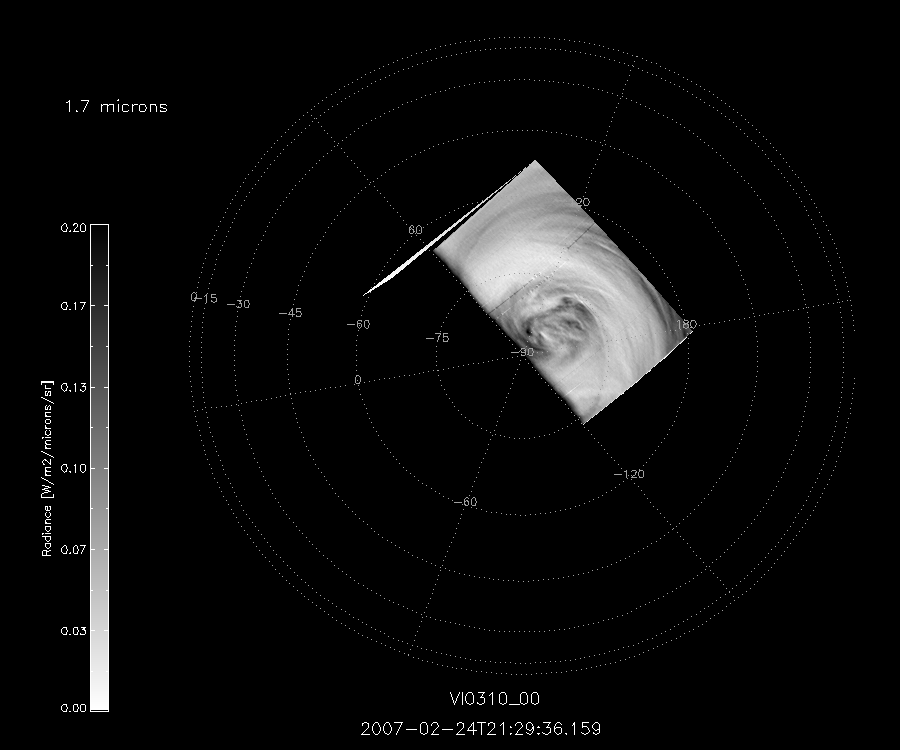

Close-up on south polar vortex
This sequence of infrared images of the venusian south polar vortex was obtained by the Visible and Infrared Thermal Imaging Spectrometer (VIRTIS) on board ESA’s Venus Express on 28 May 2006, at a distance of 66 000 km from the planet’s surface. The individual snapshots are separated by about an hour.
The high (spatial) resolution of these images (taken at 5.05 micrometres) provides an unprecedented detailed view of the dipole, which extends over an area of 2700 by 900 km. The main source of the radiation measured by VIRTIS comes from a layer at about 60-km altitude, where the contrast is maximum.
The red circle indicates the south pole. The ‘cold collar’, an area of the atmosphere surrounding the vortex, is coldest on the right side.
High resolution versions of the individual images in the composite:
6_VIRTIS_polar_vortex_closeup_1, 6_VIRTIS_polar_vortex_closeup_2, 6_VIRTIS_polar_vortex_closeup_3, 6_VIRTIS_polar_vortex_closeup_4





